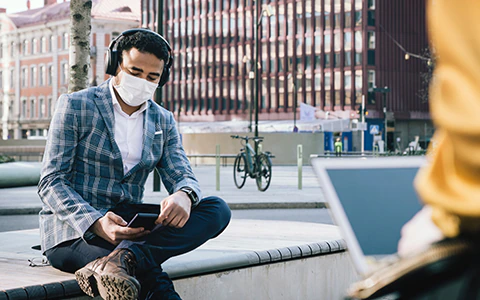Returning Idle Equipment to Service After an Extended Shutdown


Returning equipment to normal operation after an extended idle period can increase the risk of equipment failure, particularly during startup. Extended idle periods can lead to different types of deterioration, such as sagging of rotating elements and migration of lubrication – caused largely by gravity – as well as oxidation of metal parts.
Restoring equipment to normal service
Planning the necessary steps to restore equipment to normal service after an extended period will depend on the amount and type of use the equipment experienced during the shutdown. Age-related deterioration occurs in all equipment, even when equipment is not being operated.
In most cases, building services equipment (HVAC, electric power distribution, plumbing systems, etc.) will have remained in service during the business shutdown. However, if plumbing systems contain standing or stagnate water, flush the systems to remove bacteria and metals. Whether or not these systems were shut down, their proper operation should be verified before reoccupying the building(s).
- Qualified contractors or employees familiar with the proper operation of the equipment should verify that the equipment has no sign of leakage, that it is maintaining proper operating temperature and that fluid levels are sufficient. Where applicable, equipment cycling should occur within the normal operating parameters.
- Electricians should restore electrical loads slowly to prevent damage to electrical systems. Maintenance personnel should monitor equipment operation as power is restored.
- Investigate any unexpected conditions and resolve them prior to further operation. Normal preventive maintenance steps should be taken, and a schedule of maintenance reestablished.
- Test emergency systems, such as emergency power generators, as soon as practical for proper operation in accordance with original equipment manufacturer (OEM) guidelines and normal practices. A service contractor or qualified technician should physically observe testing of the emergency equipment.
For equipment that was shut down and not used:
Consult OEM guidance for initial startup or returning equipment to service.
- Develop a checklist for the equipment restoration process, including verification of oil and coolant levels, removal of desiccant and checking for obstructions, such as blocking or strapping that was placed to prevent unwanted movement, etc.
- Replace lubricants and cooling fluids for critical equipment if necessary.
- Consult manufacturer’s guidelines for startup and break-in periods. Most equipment should not be operated at full capacity on restart.
- Test installed safeguards, controls and interlocks as applicable during the restoration process.
- For close-tolerance machinery, calibration and alignment checks may be needed to help ensure sensors and measuring devices are functioning properly.
- If possible, verify that moving parts of each piece of equipment are free and unobstructed prior to energizing.
- Continuously monitor parameters for proper operation (fluid levels, oil pressure, temperature, etc.) during the startup process.
- Increase the inspection frequency following restoration to service until normal operating conditions are established.
Repurposed equipment
During an extended shutdown, some equipment may have been repurposed for an alternate use. This repurposing may have presented new exposures to your equipment. When you return to normal operations, it is important to return the equipment configuration to its original use and communicate all changes to affected personnel. Be sure to pay attention to restoring alterations and verifying that the alternate use did not result in a detrimental condition.
- Develop a checklist for the equipment restoration process. This checklist should reverse any steps taken when the equipment was altered. It also should include routine maintenance per the manufacturer’s guidelines.
- Thoroughly examine repurposed equipment, paying attention to any equipment parts that may have been stressed differently than during normal operation. Predictive testing (nondestructive examination, vibration analysis, lube oil analysis, etc.) should be used as necessary to verify machine integrity.
- Repurposing machinery may create debris that is not present during normal operation. Clean unusual substances from all areas of the equipment.
- Repurposing equipment may accelerate the normal wear and tear of parts such as belts, chains and bearings. Inspect and replace these components as necessary prior to returning the equipment to regular service. Implement a more frequent inspection schedule until normal wear patterns are reestablished.
- Inspect all safeguarding, paying particular attention to equipment that was repurposed during the shutdown. Repair and replace any damaged or missing safeguarding prior to resuming operations.
Equipment that will remain out of service
- Age-related deterioration occurs in all equipment, even when equipment is not being operated.
- Equipment that is to remain out of service should receive maintenance on a regular basis to ensure that any adverse effects of idleness and environmental conditions are minimized.
- Consult OEM guidance for out-of-service equipment maintenance and long-term storage guidance.



